While shiny stand mixers have their place in the kitchen, your hands are sometimes the best equipment! The difficult part is determining when you should use an electric hand or stand mixer and when you’re better off relying on old-fashioned elbow grease.
Depending on what you’re making, your production schedule, and your personal pastry style, each method can have major advantages. Follow these tips to ensure you make the right call the next time you’re combining ingredients.
When to Use an Electric Stand Mixer
Stand mixers are powerful, versatile, and efficient tools. That said, the best tools are only helpful if you know how to use them! That’s why students in professional baking & pastry programs practice using stand mixers to create everything from pate au choux to buttercream frosting to bagels.
When you use a stand mixer properly, you’ll find this tool can allow you to uniformly mix ingredients. It can also let you multitask more efficiently—and all great pastry chefs know that proper time management is key to a smoothly-running kitchen. While the machine brings ingredients together, you can focus on other tasks. Plus, many stand mixers also have handy features like timers or automatic stops.
By using the provided bowl and attachments like a paddle, whisk, and hook, you can prepare a wide variety of mixtures. However, it’s important to choose the proper attachment for each task.
“I had some huge epiphanies about [simply creaming the butter and sugar]. I don’t think I ever was properly doing it. And I can see the enormous difference between a professional and home cook, just having someone explain the proper way to do these most basic things.”*
Tara Bissell, Escoffier Online Baking & Pastry Student and Owner/Baker, Andy’s Artisan Bread
Use the Paddle Attachment as a Wooden Spoon Replacement
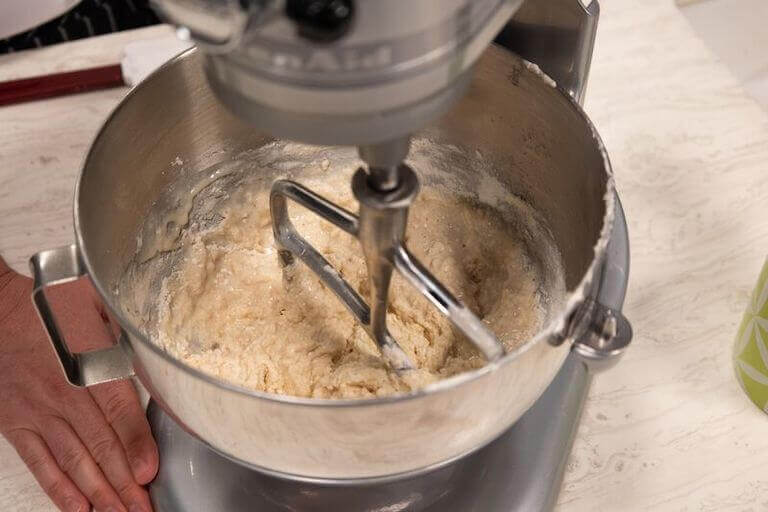
Also known as a flat beater, the paddle attachment acts similarly to a wooden spoon. However, when you use this tool, you won’t have to worry about tired hands and arms!
If you’re working in the pastry arts, you may find the versatile paddle attachment quickly becomes a beloved tool. It’s perfect for creaming butter until it’s fluffy, mixing a lump-free cake batter, and folding in dry ingredients when making cookie dough.
Use the Wire Whisk Attachment for Thin Mixtures
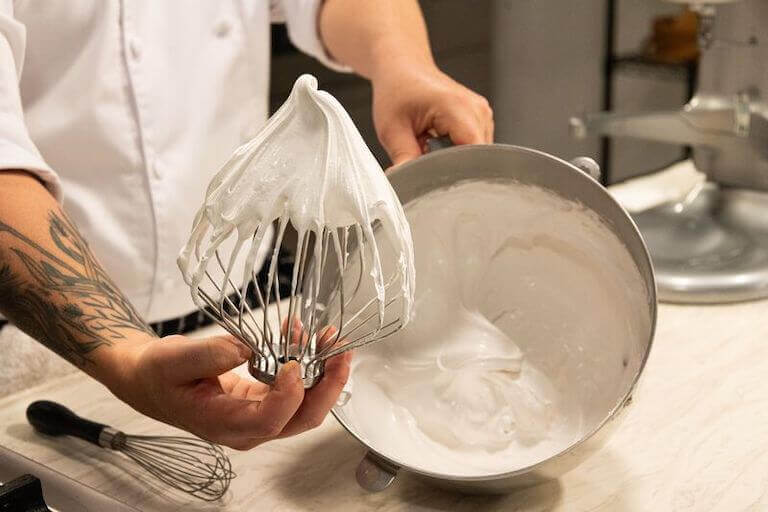
Just like a hand-held wire whisk, this attachment is designed to whip air into thin mixtures. While it won’t stand up to thick doughs and batters, it’s the ideal tool for whipping egg whites and cream into stiff peaks.
If you’re making a large batch of mayonnaise, meringues, or marshmallows, a stand mixer and whisk attachment can free up your hands so you can spend your precious time completing other tasks.
Use the Hook Attachment for Thick Doughs
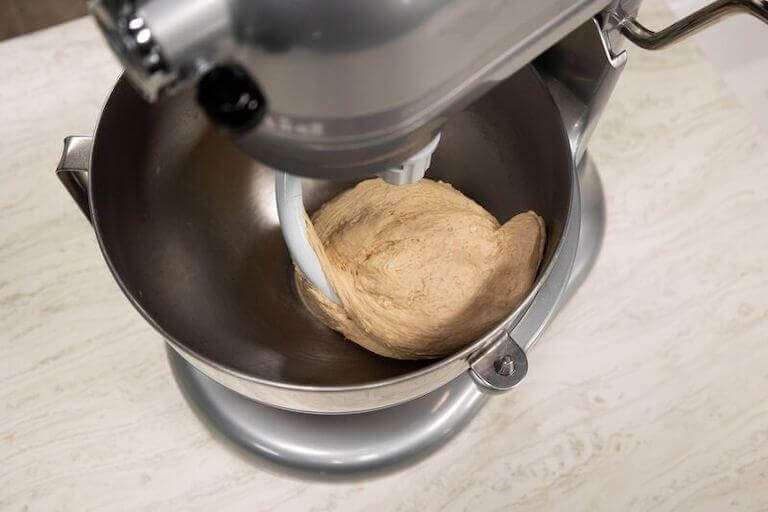
The hook is all about kneading thick doughs, whether you’re aiming to make a rich brioche, a whole wheat boule, or a batch of pasta. While sticky dough will easily cling to a paddle attachment and even cause the mixer to overheat, the hook is specifically designed to stand up to these sturdy doughs.
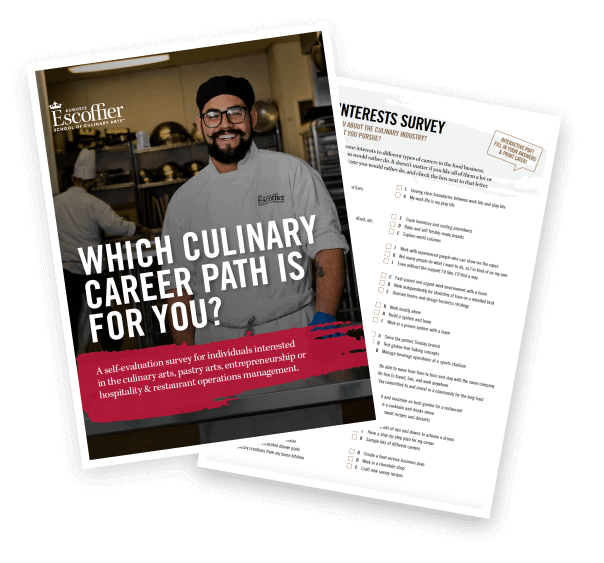
Take the Culinary Career Survey
We’ve compiled a checklist of all of the essential questions into one handy tool: career options, culinary interest surveys, educational opportunities, and more.
When to Use an Electric Hand Mixer
A hand mixer is often preferable to a stand mixer when it comes to lighter-duty tasks or when you are only mixing a small portion. Plus, it’s easy to use a compact hand mixer in bowls of different sizes, instead of using the one provided with a stand mixer.
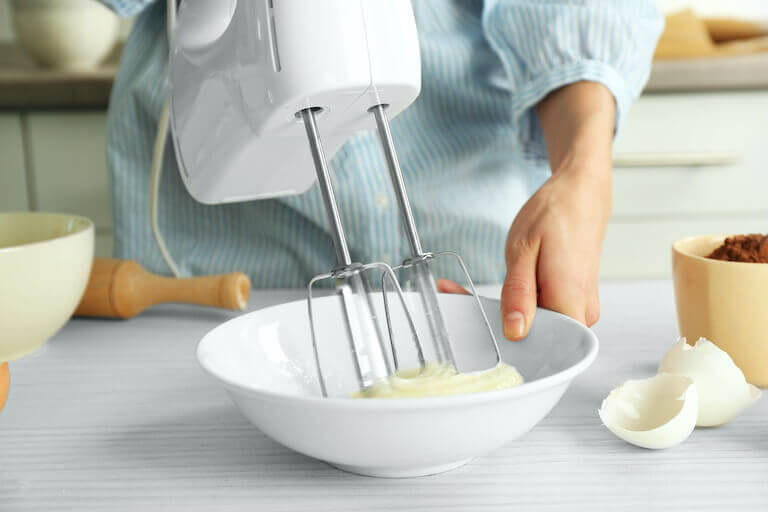
There are other practical advantages to these smaller tools. They are less expensive than stand mixers, and they often take up less space. However, when you’re working with a thick batter or dough, a hand model will likely not have the power that’s necessary to achieve the best results.
So when should you turn to a hand mixer? If you’re mixing a batter for a single cake, preparing a small batch of cookie dough, or whipping a stick or two of butter, a hand mixer can do the trick.
When to Use Your Hands for Mixing
Electric mixers, food processors, and blenders carry huge advantages for preparing food, especially when you need to make large quantities, whip air into thick doughs and batters, or complete work quickly. However, whisking or folding ingredients by hand can give you greater precision and control (and eliminate some dirty dishes!)
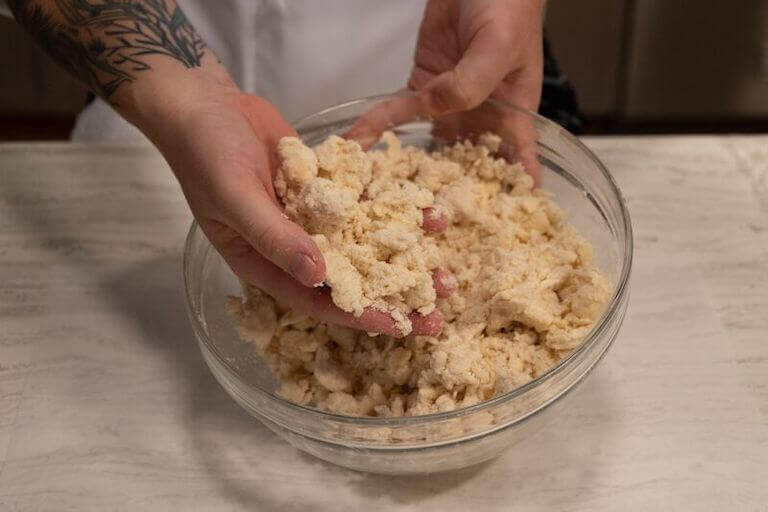
Mixing by hand may involve getting your hands dirty but you can also turn to simple tools like a wooden spoon or rubber spatula. The flexible spatula works well for folding dry ingredients into wet ingredients when making a cake batter, while a wooden spoon can stand up to thicker cookie, scone, and biscuit doughs.
Your hands may also be ideal for kneading and folding dough. If you don’t have a stand mixer, skip the low-powered hand mixer and use your hands instead. By continuously folding the dough, you’ll help develop the gluten that creates the sought-after chewy texture.
“We touch on all of the different cakes, pies, pastries, breads, and composed desserts. From the beginning to the end, you’re learning one technique that rolls into another technique so you have a great base knowledge.”*
Chef Emily Maddy, Escoffier Chef Instructor
Tools Are Only as Good as Your Knowledge
While knowing when to use a stand mixer vs. your hands will set you on the right track, this is only one facet of becoming a pastry chef!
Along with knowing which tool to select for each job, it can be helpful to understand the specific intricacies involved in mixing frostings, bread doughs, cake batters, and more. Students in Escoffier’s Baking and Pastry Arts programs can get hands-on experience creating a wide variety of pastries and baked goods. Not only can they explore how to use different tools, but they may also receive helpful critiques from professional chef instructors.
If you’re interested in learning more about Escoffier’s available programs, contact us today.
To learn more about baking and pastry, check out these articles next:
- A Brief Guide to Viennoiseries: History and Most Popular Types
- Six Skills Every Baker Should Have
- Pastry Chef vs. Baker: What’s the Difference?
*Information may not reflect every student’s experience. Results and outcomes may be based on several factors, such as geographical region or previous experience.
This article was originally published on August 7, 2017 and has since been updated.

 “I had some huge epiphanies about [simply creaming the butter and sugar]. I don’t think I ever was properly doing it. And I can see the enormous difference between a professional and home cook, just having someone explain the proper way to do these most basic things.”*
“I had some huge epiphanies about [simply creaming the butter and sugar]. I don’t think I ever was properly doing it. And I can see the enormous difference between a professional and home cook, just having someone explain the proper way to do these most basic things.”*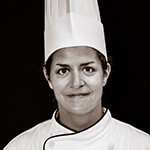 “We touch on all of the different cakes, pies, pastries, breads, and composed desserts. From the beginning to the end, you’re learning one technique that rolls into another technique so you have a great base knowledge.”*
“We touch on all of the different cakes, pies, pastries, breads, and composed desserts. From the beginning to the end, you’re learning one technique that rolls into another technique so you have a great base knowledge.”*

